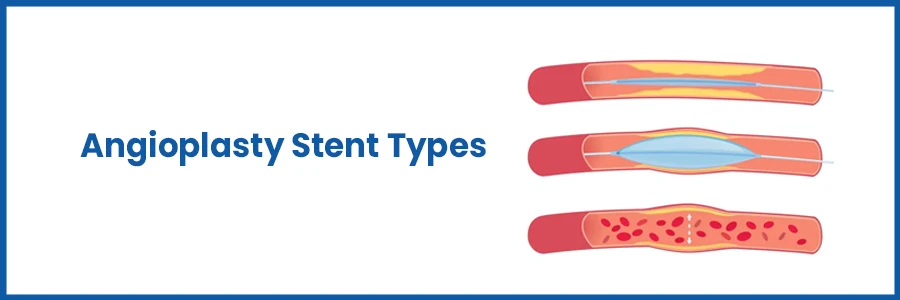Angioplasty Stent: Types and After Care

Stents are small mesh tubes that are inserted into narrowed or blocked arteries to help maintain them open and improve blood drift. The preference of stent is predicated upon on various factors, such as the affected person's scenario and the characteristics of the blockage.
How many stents are in angioplasty?
The range of stents utilized in angioplasty can vary depending on the severity and location of the blockages within the blood vessels. It's not unusual for a couple of stents to be used throughout an unmarried angioplasty system, in particular, if there are multiple narrowed or blocked arteries.
The choice of the extensive variety of stents is made by using the interventional cardiologist primarily based on the precise anatomy of the affected person's blood vessels and the extent of the coronary artery sickness. In a few cases, a single stent can be enough to cope with a focal blockage in a coronary artery. In different instances, especially if there are multiple blockages or if a long segment of an artery is affected, multiple stents can be had to efficaciously treat the state of affairs.
Here are a few commonplace angioplasty stent types:
- Bare Metal Stents (BMS): These are fundamental stents made from steel (generally stainless steel) and don't have any unique coating. They are powerful in stopping the artery from very last up all over again but may be related to a better price of restenosis (re-narrowing).
- Drug-Eluting Stents (DES): These stents are included with medicinal drugs which might be slowly released into the encircling tissue to help prevent the formation of scar tissue and decrease the chance of restenosis. The pills are commonly anti-proliferative dealers. Paclitaxel and sirolimus are examples of drugs used in drug-eluting stents.
- Bioabsorbable Stents: Also known as bioresorbable vascular scaffolds (BVS), the stents are designed to be absorbed by way of the body over time. The concept is that once the artery is healed, the stent is not desired, and the vessel can return to its regular characteristic without an everlasting implant. However, their use has been debated, and now not each type has verified ordinary benefits as compared to conventional stents.
- Dual Therapy Stents: These stents combine the advantages of drug-eluting stents with a further layer of a biocompatible polymer to similarly enhance drug delivery and reduce inflammation.
- Self-Expanding Stents: Unlike balloon-expandable stents which are probably deployed using a balloon, self-growing stents increase on their very own when launched from the delivery device. They are regularly used in specific anatomical locations or whilst dealing with vessels that have an excessive threat of compression.
- Balloon-Expandable Stents: These stents are mounted on a balloon and multiplied through the way of inflating the balloon at the target site.
They are generally utilized in coronary angioplasty methods. It's critical to note that medical technology evolves, and new stent technologies may also have evolved for the motive that my closing update. The desire for a stent is normally made by way of manner of the interventional heart specialist primarily based on the appropriate developments of the affected character's state of affairs and the anatomy of the handled vessel. Patients have to speak with their healthcare carriers for the most up-to-date statistics on stent sorts and their suitability for a specific situation.
Lifestyles of stents utilized in angioplasty
The lifespan of stents utilized in angioplasty can vary based totally on the form of stent implanted and man or woman-affected person factors. Here's a popular assessment:
- Bare Metal Stents (BMS): Bare steel stents are everlasting implants, and they remain inside the artery for the relaxation of the affected person's existence. Over time, the artery heals throughout the stent, incorporating it into the vessel wall.
- Drug-Eluting Stents (DES): Drug-eluting stents launch medications that assist in preventing the re-narrowing of the dealt-with artery. The drug-eluting effect is normally time-restrained, generally starting from some weeks to numerous months. However, the stent itself, like bare steel stents, remains within the artery absolutely.
- Bio-absorbable Stents: Bio absorbable stents are designed to be steadily absorbed by the frame over the years. The absorption technique can take several months to a few years. As the stent dissolves, the artery is expected to go back to a greater herbal kingdom without an everlasting implant.
